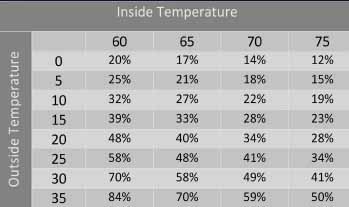It’s 91F , and it feels like 97F outside. We thought you might like an article that’s a bit on the cool side. Have you ever noticed condensation on the inside of your house? Sometimes, if the difference between the outside temperature and the inside temperature is significant, it can almost seem like it’s raining on the inside. So, what causes this?
It's Called Condensation
Condensation may occur inside your home when it’s extremely cold outside and the inside humidity of your house is higher than recommended. What will happen is that condensation will occur on colder surfaces inside such as hinges, hardware, and glass. These are the surfaces that are closer to the outside air, so excess moisture inside your house (humidity) forms droplets (condensation) on these surfaces.
Where Did This Water Come From?
The condensation that forms isn’t coming from outside of your home. Humidity is a term used to describe the amount of water vapor, or molecuses, in the air. Another term you may have heard is dew point temperature. That is the temperature the air needs to be cooled in order to achieve a relative humidity of 100%. At that point, the air can no longer hold more water in the gas form and that water changes to liquid (condensation or rain). Our Replacement Window Manufacturer, Provia, provided us with a simple illustration of this effect.

Can This Be Fixed?
Think about where moisture originates inside your home. It’s created by showers, bathing, cooking, laundry, or lots of people. Elevated moisture levels may also lead to mold and rot in unseen areas of your home.
Reducing the humiidity percentage inside the home when it’s cold outside usually takes care of the problem. The chart below depicts recommended humidity levels to eliminate condenstation. Please note that these are only estimates and that other factors including airflow, insulation, and structural design may change the temperature point at which condensation may form.

The answer is yes, you can work with your HVAC provider to obtain a proper inside humidity level. You can also watch the humidity level yourself with a simple indoor humidity gauge. And, if you’re concerned about the integrity of your doors and windows, give us a call – we can help!




